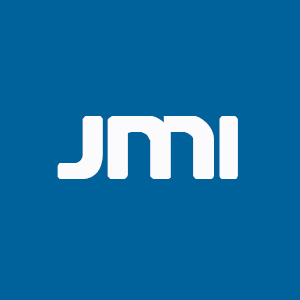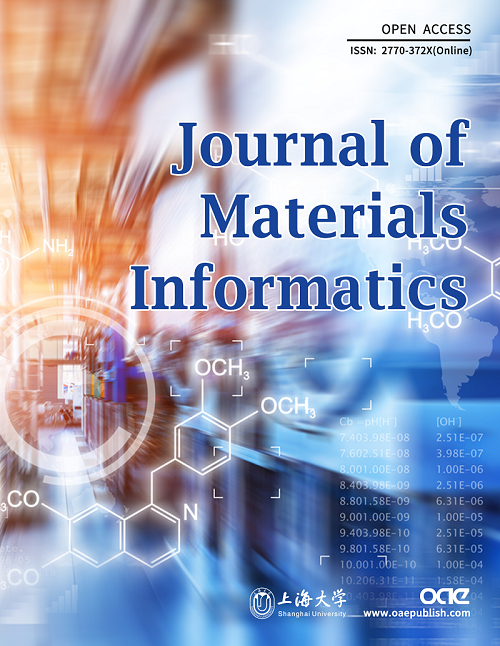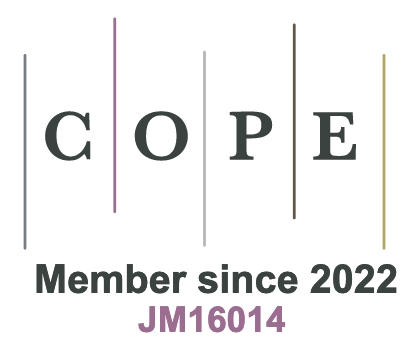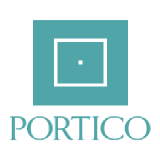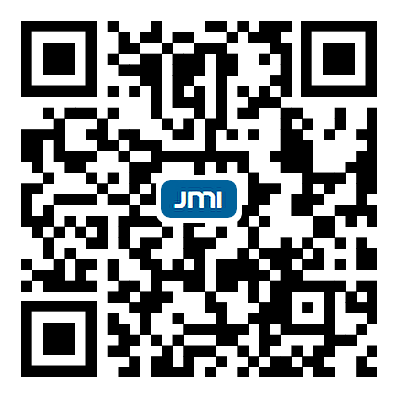REFERENCES
1. Salvado, F. C.; Teixeira-Dias, F.; Walley, S. M.; Lea, L. J.; Cardoso, J. B. A review on the strain rate dependency of the dynamic viscoplastic response of FCC metals. Prog. Mater. Sci. 2017, 88, 186-231.
2. Li, H.; Ebrahimi, F. Transition of deformation and fracture behaviors in nanostructured face-centered-cubic metals. Appl. Phys. Lett. 2004, 84, 4307-9.
3. He, B. B.; Hu, B.; Yen, H. W.; et al. High dislocation density-induced large ductility in deformed and partitioned steels. Science 2017, 357, 1029-32.
4. Li, H.; Du, J.; Shang, S.; Liu, Z.; Liu, F. 3D misfit potentials dependent deformation behaviors with respect to different dislocation core structures of fcc metals. Phys. Rev. Mater. 2025, 9, 063604.
5. Paul, M. J.; Kruzic, J. J.; Ramamurty, U.; Gludovatz, B. The importance of fracture toughness evaluation for additively manufactured metals. Acta. Mater. 2024, 276, 120061.
6. Carlsson, A. E.; Thomson, R. Fracture toughness of materials: from atomistics to continuum theory. Solid. State. Phys. 1998, 51, 233-80.
7. Ma, J.; Yuan, L.; Zong, Y.; Zheng, M.; Shan, D.; Guo, B. Crack-tip cleavage/dislocation emission competition behaviors/mechanisms in magnesium: ALEFM prediction and atomic simulation. Int. J. Plast. 2024, 182, 104134.
8. Armstrong, R. Cleavage crack propagation within crystals by the Griffith mechanism versus a dislocation mechanism. Mater. Sci. Eng. 1966, 1, 251-4.
10. Rice, J. R.; Thomson, R. Ductile versus brittle behaviour of crystals. Philos. Mag. 1974, 29, 73-97.
12. Rice, J. R. Dislocation nucleation from a crack tip: an analysis based on the Peierls concept. J. Mech. Phys. Solids. 1992, 40, 239-71.
14. Brocks, W. Elastic-plastic fracture mechanics. In Plasticity and Fracture. Cham: Springer International Publishing; 2018. pp. 49-84.
15. Andric, P.; Curtin, W. New theory for Mode I crack-tip dislocation emission. J. Mech. Phys. Solids. 2017, 106, 315-37.
16. Xu, G.; Argon, A. S.; Ortiz, M. Nucleation of dislocations from crack tips under mixed modes of loading: implications for brittle against ductile behaviour of crystals. Philos. Mag. A. 1995, 72, 415-51.
17. Gumbsch, P.; Beltz, G. E. On the continuum versus atomistic descriptions of dislocation nucleation and cleavage in nickel. Model. Simul. Mater. Sci. Eng. 1995, 3, 597-613.
18. Kelly, A.; Tyson, W. R.; Cottrell, A. H. Ductile and brittle crystals. Philos. Mag. 1967, 15, 567-86.
19. Schoeck, G. The emission of dislocations from crack tips. Mater. Sci. Eng. A. 2003, 356, 93-101.
20. Schoeck, G. Dislocation emission from crack tips as a variational problem of the crack energy. J. Mech. Phys. Solids. 1996, 44, 413-37.
21. Zamora, R. J.; Nair, A. K.; Hennig, R. G.; Warner, D. H.
22. Tadmor, E.; Hai, S. A Peierls criterion for the onset of deformation twinning at a crack tip. J. Mech. Phys. Solids. 2003, 51, 765-93.
23. Yamakov, V.; Warner, D.; Zamora, R.; Saether, E.; Curtin, W.; Glaessgen, E. Investigation of crack tip dislocation emission in aluminum using multiscale molecular dynamics simulation and continuum modeling. J. Mech. Phys. Solids. 2014, 65, 35-53.
24. Knap, J.; Sieradzki, K. Crack tip dislocation nucleation in FCC solids. Phys. Rev. Lett. 1999, 82, 1700-3.
25. He, X.; Zhang, W.; Li, X. Modeling of Mode I crack-tip dislocation nucleation in three FCC materials: Ni, Cu and Al. Mech. Mater. 2024, 196, 105068.
26. Van Swygenhoven, H.; Derlet, P.; Frøseth, A. Nucleation and propagation of dislocations in nanocrystalline fcc metals. Acta. Mater. 2006, 54, 1975-83.
27. Andric, P.; Curtin, W. New theory for crack-tip twinning in fcc metals. J. Mech. Phys. Solids. 2018, 113, 144-61.
29. Andric, P.; Curtin, W. A. Atomistic modeling of fracture. Model. Simul. Mater. Sci. Eng. 2019, 27, 013001.
30. Argon, A. S.; Xu, G.; Ortiz, M. Kinetics of dislocation emission from crack tips and the brittle to ductile transition of cleavage fracture. MRS. Online. Proc. Libr. 1995, 409, 29-44.
31. Gulizzi, V.; Benedetti, I.; Milazzo, A. A novel boundary element formulation for anisotropic fracture mechanics. Theor. Appl. Fract. Mech. 2019, 104, 102329.
32. Zhu, S.; Ringer, S. P. On the role of twinning and stacking faults on the crystal plasticity and grain refinement in magnesium alloys. Acta. Mater. 2018, 144, 365-75.
34. Mishin, Y.; Farkas, D.; Mehl, M. J.; Papaconstantopoulos, D. A. Interatomic potentials for monoatomic metals from experimental data and ab initio calculations. Phys. Rev. B. 1999, 59, 3393.
35. Du, J.; Liu, Y.; Zhao, C.; et al. Towards mechanical performance paradox and behind thermo-kinetic origins of aluminum alloys with additional solutes (X = Mg, Cu and Si) from atomistic simulations. J. Mater. Inf. 2025, 5, 10.
36. Bitzek, E.; Koskinen, P.; Gähler, F.; Moseler, M.; Gumbsch, P. Structural relaxation made simple. Phys. Rev. Lett. 2006, 97, 170201.
37. Brunner, F.; Andric, P.; Maresca, F. An atomistic K-test framework for general grain boundaries and triclinic single crystals. Model. Simul. Mater. Sci. Eng. 2025, 33, 035004.
38. Kou, Z.; Yang, Y.; Yang, L.; Zhang, W.; Huang, B.; Luo, X. Deformation twinning in response to cracking in Al: an in situ TEM and molecular dynamics study. Scr. Mater. 2018, 145, 28-32.
39. Yarema, S. Y. On the contribution of G. R. Irwin to fracture mechanics. Mater. Sci. 1996, 31, 617-23.
40. Griffith, A. A. VI. The phenomena of rupture and flow in solids. Phil. Trans. R. Soc. Lond. A. 1921, 221, 582-93.
41. Du, J.; Liu, Y.; Zhang, Z.; et al. Deformation behaviors in light of dislocation core characteristics with respect to the compositional-dependent misfit potentials of aluminum alloys. J. Mater. Res. Technol. 2023, 27, 4366-77.
42. Zhang, Z.; Li, K.; Cai, T.; et al. Effects of stacking fault energy on the deformation mechanisms and mechanical properties of face-centered cubic metals. Acta. Metall. Sin. 2023, 59, 467-77 (in Chinese).
43. Ren, S.; Li, J.; Fang, Q.; Feng, H. Effect of solid solution addition on the dislocation emission in aluminum alloys. Acta. Mech. 2020, 231, 4537-45.
44. Sheng, Y.; Yang, H.; Ma, W.; Jiang, X. Interaction of dislocations and cracks in grains based on discrete dislocations. Int. J. Fract. 2023, 239, 135-47.
45. Zeng, G.; Guo, Y.; Xiong, C.; et al. Enhanced fatigue crack propagation resistance of Al-Cu-Li alloys via regulating grain structure and precipitation behavior. Int. J. Fatigue. 2025, 197, 108916.
46. Lu, Z.; Kapoor, I.; Li, Y.; Liu, Y.; Zeng, X.; Wang, L. Machine learning driven design of high-performance Al alloys. J. Mater. Inf. 2024, 4, 19.
47. Liu, J.; Sun, J.; Meng, J.; Li, J. Microstructural stability and stress rupture properties of a third-generation Ni base single crystal supalloy. Acta. Metall. Sin. 2024, 60, 770-6 (in Chinese).
48. Wang, K.; Li, H.; Zhou, Y.; Wang, J.; Xin, R.; Liu, Q. Dislocation slip and crack nucleation mechanism in dual-phase microstructure of titanium alloys: a review. Acta. Metall. Sin. 2023, 36, 353-65.
49. Tan, K.; Xie, J.; Qin, H.; et al. Effects of Co and Nb on the crack of additive manufacturing nickel-based superalloys. Acta. Metall. Sin. 2024, 37, 1601-10.
